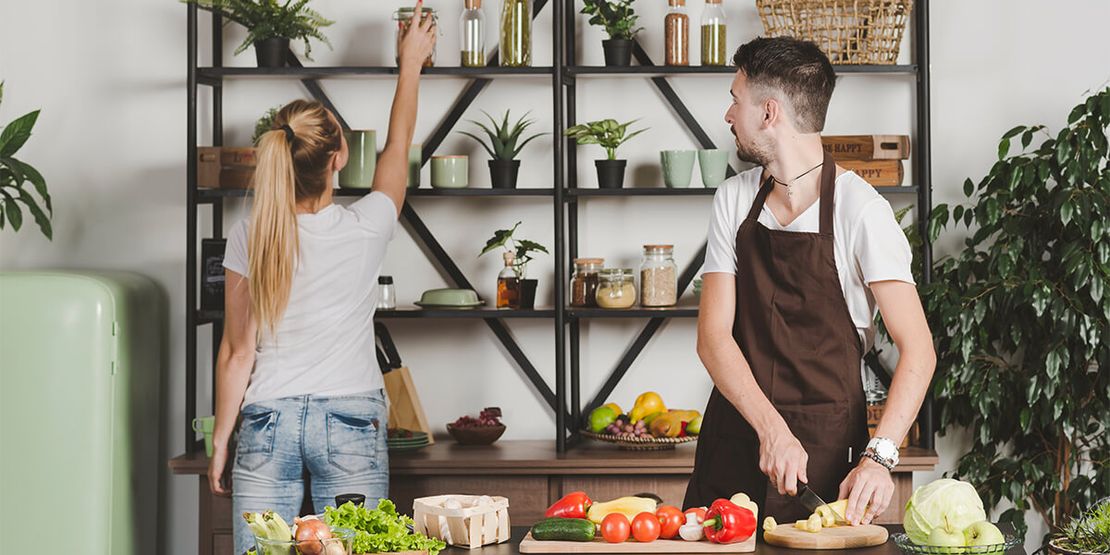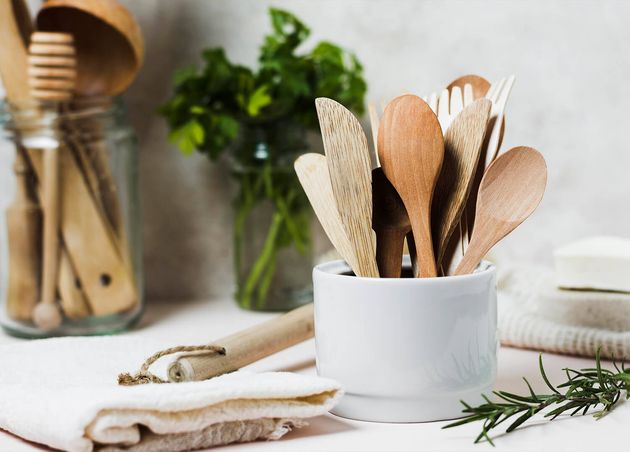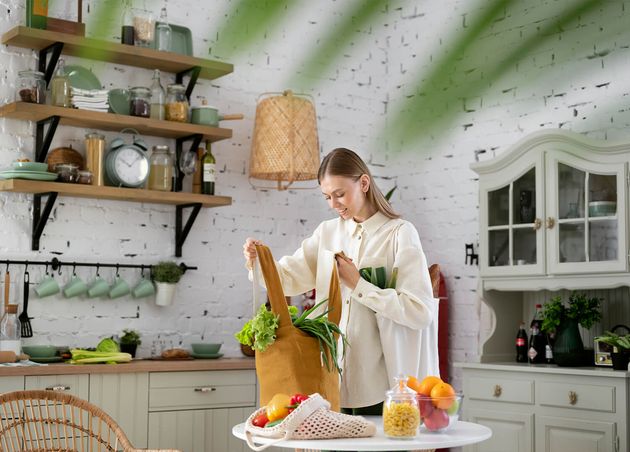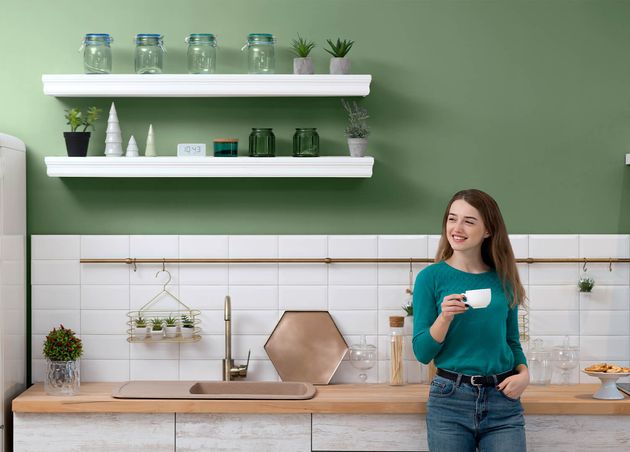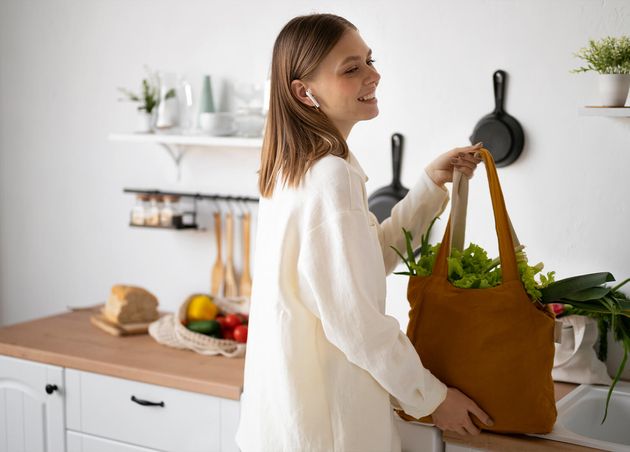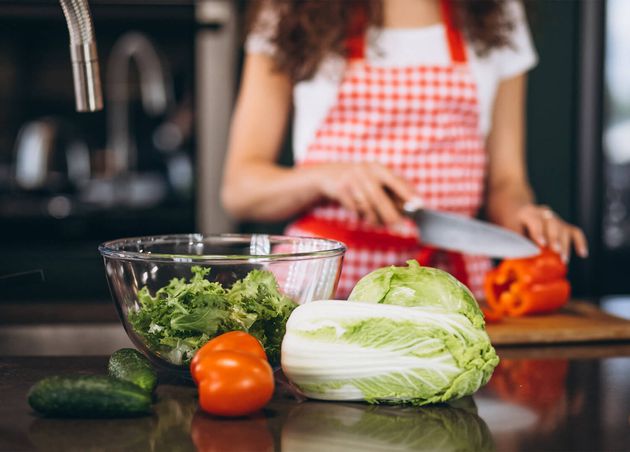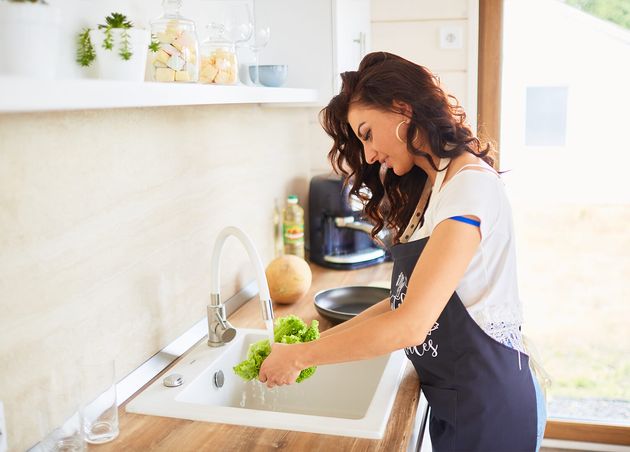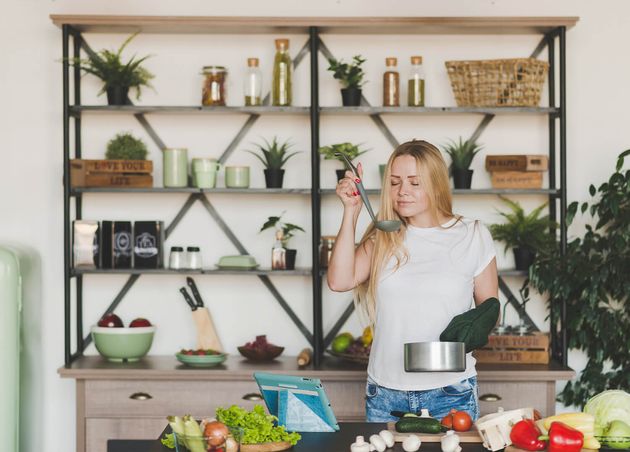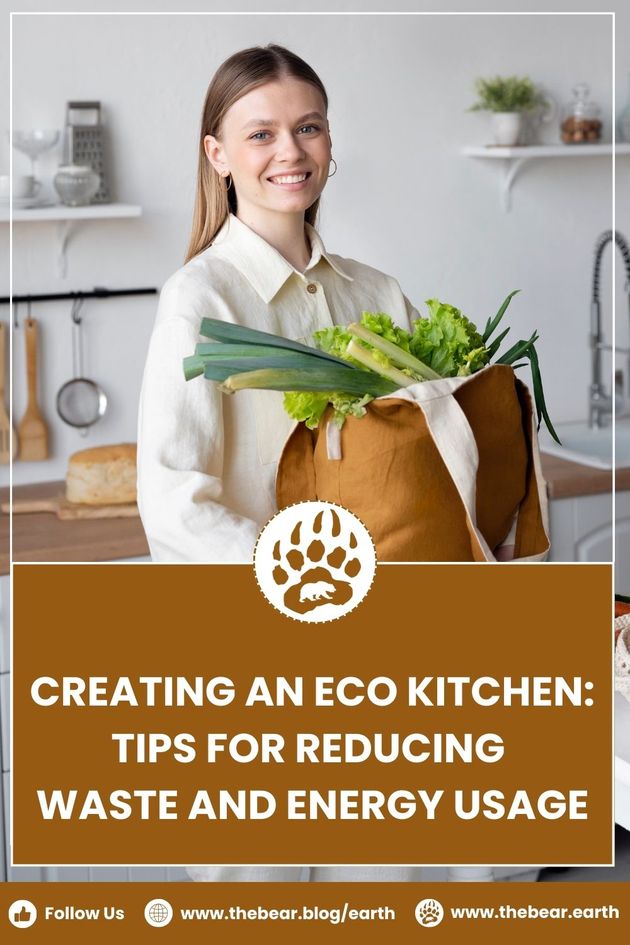Creating an ECO Kitchen: Tips for Reducing Waste and Energy Usage
Beginning in 2020, most of us will spend more time than ever feeding ourselves. The reason for that was the changes in people's daily lives due to the COVID-19 pandemic that started in 2020. While we are not climate change or environmental experts, we are food and kitchen experts. We often have control over our cooking, cleaning, food storage, and waste minimization practices.
The global challenges of waste management and energy shortages are two of the most critical issues we currently confront. Therefore, logically, we can find solutions to these problems in our kitchen. What are the possible solutions? How do they function in our kitchen? So come with us and get information about this valuable topic.
What is an ECO Kitchen?
Reduce the environmental effects of food preparation and consumption in a sustainable kitchen. There are several methods to construct a sustainable eating environment. However, some of the most significant factors include the use of sustainable materials, the purchase of energy-efficient equipment, and the selection of sustainable food.
With the present status of the environment, it is more crucial than ever to create a sustainable kitchen. Minor adjustments in everyday culinary and food-making behaviors contribute to large-scale transformation.
🌍 Eco Fact
Nowadays, our world depends on the Eco concept, and more people should know how important sustainability is. If everyone does their part to live more sustainably, we can change the future of our world.
Eco-Friendly Kitchen Habits
One of the finest areas to begin developing a more ecologically conscious lifestyle is in the kitchen. Fortunately, the sustainable option is frequently the most cost-effective, so conserving resources saves you money.
#1 Sustainable Shopping
- Avoid Processed Foods and Wasteful Packaging
- Consume raw or lightly processed foods wherever feasible. Heavily manufactured food items like chicken nuggets, baked goods, and sugary drinks often contain components that are harmful to the environment, such as palm oil.
- These foods are frequently heavy in salt, sugar, and saturated fat. Highly processed foods should be avoided since they harm you and the environment.
- Even healthy foods are sometimes offered in unnecessary packaging. For example, entire apples are preferable to individually wrapped pots of natural ketchup.
- Reduce unneeded packing in your house by using your bags, purchasing fresh, unwrapped vegetables, and avoiding big servings. If you frequently toss food out, you purchase or cook too much.
- Planning
- Meal planning may assist in achieving sustainability by purchasing the correct components in the required quantities; utilizing leftovers in innovative ways can assist individuals in making the most of what they have. Before cooking, list what you have on hand and plan your meals appropriately. This will assist in avoiding the purchase of unneeded things.💲
- When building a more ecologically sustainable society, purchasing power is critical. So be sure the food and gadgets you buy for your kitchen are eco-friendly. Buying sustainable and ecologically friendly food may make your home's kitchen and the marketplace less harmful to the environment.
- Go Local!
- It is critical to consider your food and where it originates from. Buy locally wherever possible.
- Food miles are essential in an eco-friendly kitchen; the fewer kilometers from farm to table, the better. Pineapple may taste delicious during the chilly winter months. But consider the pollution caused by flying it here, not to mention all of the preservatives, biocides, and other nonsense found in meals that come to us.
- Buy in Bulk
- Buy in quantity when shopping for herbs, spices, pasta, nuts, and other foods. Buying in bulk, like making your meals, helps prevent the wastage of overly-packaged food goods. Bring your reusable containers for storage, such as glass mason jars, to go the additional mile.
#2 Sustainable Cooking
- Reduce Cooking Time
- Reducing your cooking time helps to cut your energy use and expenditures and allows you to consume your meals sooner. One approach is to slice your components into smaller bits, allowing your dish to heat through faster and lowering your cooking time. Furthermore, pan lids can save up to 40% of cooking time since the lid retains heat and stops it from escaping.
- Portion Strategically
- When cooking on a classic gas stove, be sure the pans you're using are the correct dimensions for the burner. As a general guideline, your pan should only cover the burner so that the flames don't rise over the sides of the pan when the flame is turned up to full.
- Using a big pan on a small burner or vice versa wastes energy. Cooking larger servings of food also helps to save energy because a pan's efficiency drops by 80% when it's just one-fifth full.
- Get Creative
- Although the microwave is not the most environmentally friendly cooking equipment, heating or reheating smaller food portions in the microwave may be far more energy efficient than a standard oven.
- Additionally, using a kettle rather than a saucepan to heat the water while attempting to boil water can save energy.
- Reuse Parchment Paper and Aluminum Foil
- Parchment paper, like aluminum foil, is fantastic for simplifying cleaning and protecting foods from sticking, but it may also be reused. If it isn't shredded or filthy, wipe it clean, fold it, and preserve it for later use.
- Looking for a more long-lasting option? Cleaning up with silicone baking mats is a breeze.
- Save Energy After You Cook
- Make sure you're not wasting energy by completing the following while heating leftovers:
- Let leftovers cool down before placing them in the fridge or freezer.
- As soon as possible, close the door to your refrigerator or freezer.
- As needed, defrost your refrigerator or freezer.
- Keep your refrigerator's temperature at 41 degrees Fahrenheit or lower.
- If you set it higher, your food may deteriorate sooner.
- Allow at least 4 inches between your refrigerator's back and the wall behind it. Heat will be able to escape more effectively as a result of this.
- Make sure you're not wasting energy by completing the following while heating leftovers:
#3 Sustainable Cleaning
- Compost….Everything to Can!
- Make use of your leftovers by transforming them into new and fascinating recipes. Composting is an excellent technique to reduce food waste. It not only reduces the quantity of rubbish sent to the landfill, but it also improves the soil in the garden.
- When you compost, you are actively contributing to the betterment of your community. You are minimizing the quantity of rubbish going to the landfill, lowering the amount of methane gas emitted into the environment, and generating the most beneficial soil full of minerals and utilized to grow a great deal of food.
- Be Water Wise!
- Installing a low-flow aerator is one of the most cost-effective methods to adopt eco-friendly practices in the kitchen. We waste a lot of water when cooking and preparing meals; this easy technique will save you water by adjusting the flow, not the pressure.
- Ditch the Paper Towels
- This is how you save money while also reducing garbage. If you only make one sustainable kitchen switch, make it this one. There are several paper towel choices to select from. You've seen how virgin paper goods devastate your forests, not to mention your expenses. Have you ever considered how much money you spent on something you knew you'd toss away after using it once? Everything adds up.
- Eco-friendly Cleaning Products
- Look for sponges produced from recyclable materials and biodegradable dish soaps and detergents devoid of phosphates and other toxic compounds that might endanger marine life. Purchase bulk items with fewer packaging, and the next time you run out of trash bags.
- When keeping your kitchen eco-friendly and healthy, avoiding hazardous cleansers is best. Several plant-based green cleaning solutions are available these days. You may make your own using common household materials like baking soda, washing soda, lemon, olive oil, salt, and white vinegar.
#4 Sustainable Kitchen Design
- Choose High-Quality, Sustainable Materials for the Kitchen
- Bamboo, cork, and recycled glass are examples of sustainable kitchen materials. All of these products are eco-friendly and will assist in lessening the carbon impact.
- Furthermore, sustainable materials are frequently more robust than traditional materials, which means they will last longer and require less costly repairs in the long term.
- Choose more ecologically friendly countertop materials like quartz when upgrading or creating a kitchen. Engineered quartz is an artificial substance manufactured from natural quartz rocks and resins, making it an environmentally sustainable alternative. As a result, quartz is long-lasting, rigid, sustainable, and even recyclable.
- Companies are compelled to work toward a more sustainable future when eco-friendly items are often purchased.
- When selecting eco-friendly goods for a domestic or commercial kitchen environment, consider the following:
- Items built from recycled materials
- Products that are recyclable or compostable
- Products that have minimal, recyclable, or reusable packaging
- Products that are manufactured from renewable resources
- Products with minimal embodied energy
- Invest in Long-Lasting Cookware
- When creating a sustainable dining room, cookware is one of the most important factors to consider. Investing in eco-friendly, long-lasting, sustainable kitchen supplies will help decrease environmental impact and build a healthier planet.
- Long-lasting cookware may initially cost more than lower-quality products. Still, it is far more cost-effective in the long term.
- With appropriate care, durable pots and pans made of cast iron, stainless steel, or ceramic will survive for decades. However, less expensive ones made of aluminum or nonstick-coated metals must be replaced every few years.
- Disposable or inexpensive cookware frequently ends up in landfills, taking up space.
- Use Eco-Friendly Appliances
- A sustainable kitchen is environmentally friendly, energy-efficient, and long-lasting. When eco-friendly and energy-efficient kitchen equipment are employed, the home's overall carbon footprint can be reduced.
- Responsible businesses aim to reduce their environmental effect by using sustainable practices. Refrigerators and dishwashers, for example, consume a significant amount of energy.
- Choose Energy Star-certified appliances that use less water and electricity to help lower your carbon impact. This can also help you save money on your electricity costs. Installing low-flow devices such as faucets and showerheads can also help minimize home water use.
- Buy an Energy-Efficient Stove
- Because there are so many different brands, selecting the best energy-efficient stove can be difficult. Gas stoves are chosen because their temperature can be easily controlled, and they heat up quickly. Having said that, although they are generally energy-efficient, they can have a detrimental impact on the overall air quality of a home.
- On the other hand, induction cooktops utilize less than half the energy of regular stoves due to their electromagnetic energy quality. They are unquestionably energy-efficient but require specific metal cookware, which is more expensive.
- So, residents should choose an energy-efficient stove that runs on clean, renewable energy.
- Chill Out!
- Ensure your freezer is complete if you want it to function more efficiently. If your refrigerator is over 10 years old, it's time to replace it. It costs you around $150 each year and wastes a significant amount of energy.
- Standing in front of the refrigerator with an open door wastes a lot of energy.
Let's Create an ECO Kitchen
Rome was not built in a day, nor will your environmentally friendly kitchen. We always recommend starting somewhere and building good habits from there! Of these places in the house, it is best to start with the kitchen, as it is one of the most wasteful places.
Applying these green and eco-friendly kitchen practices may reduce energy expenses, enhance health, and create a healthier home atmosphere.
As a result, starting modestly in our homes is essential since an example is always better than a warning. This way, we may leave our children and future generations a better future.
What suggestions do you have for making your kitchen more environmentally friendly? Remember to tell your friends about it. And if you found this post beneficial, please share it with others and enlighten the community.
Recommended for you
Sanctuary Cafe & Restaurant: Excellent Food at Pak Nam
Tle (Hungry Bear)
Top 10 Best Bisexual Dating Apps You'll Surely Love
Jordan (Bisexual Bear)
Worst Time to Travel Thailand: A Complete First-Timer's Guide
Dr. Theodore (Professor Bear)
Oh La La Cafe: Awesome Home-Style French-International Food in Bangkok
Tle (Hungry Bear)
Khao San Road: Visiting the Famous Street in Bangkok
The Bear Team


